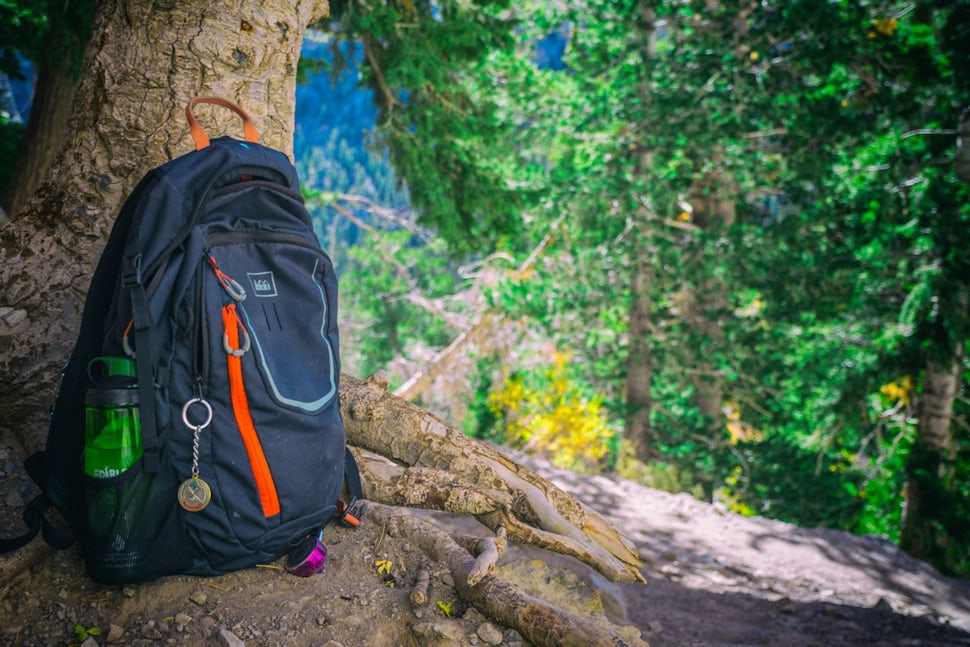A Guide to Buying and Packing Your Daypack
When nature calls, you need a daypack ready to go. Here's my take on how to make one and what essentials to pack in it.

Everyone needs a trusty daypack for when adventure calls and beckons you to nature's beauty. Picking the right pack and putting the right gear in it can make all the difference when you are in the thick of nature. Here's my take on how to create a daypack you can use when nature calls.
SELECTING A DAYPACK
So what is a daypack if you don't already know? Well it's fairly straightforward, a daypack is just what it sounds like, a backpack for the outdoors that is packed, in most cases, to equip you for a day's length trip. Typically they are used for hiking, but a daypack can be modified to be ready for any type of outdoor activity, whether it be mountain biking, rock climbing, trail running, canyoneering, or anything else you love to do when you opt outside.
Today, daypacks come in all shapes, sizes, colors, configurations, brands, and prices. Choosing the right one for you can be a challenge faced with so many options. This is especially true if you haven't had a dedicated one before and have been taking gear in and out of a backpack you use for school or work during the week. Three keys to finding a daypack that is right for you are: 1) Research 2) Research and 3) Research.
Before making any purchase be sure to use the power of everyone's all-knowing best friend Google. Google can provide you with useful websites to find a daypack you might like. It can let you know what other people who have that pack think of it based on written reviews. Google also allows you to shop around for the best price, which means you can save money and go on more adventures.
Three of my favorite websites for browsing gear for variety, reviews, and pricing are: REI, Moosejaw, and everyone's favorite Amazon. These are by far not the only sites out there, but I find myself using them most often. Some of these retailers, like many others online, may not have brick and mortar stores where you can physically inspect or try on a daypack. However they do all have a wider variety of option, while also having relaxed return policies in most cases. This can give online stores is a definite advantage compared to other retailers. If you find a pack you think you like, I encourage you to see if a local retailer near you has one in-store so you can see it for yourself before you order it and risk having to return it and start over.
Important questions to consider and things keep in mind when selecting a daypack are:
- What type of outdoors activity will I use this for? (Hiking, mountain biking, etc.)
- What type of configuration do I want? (One large central pocket, multiple front or side pockets, etc.)
- How much equipment or what type of supplies do I need to carry? (Food, water, tools, activity equipment, etc.)
- How much am I willing to spend?
EQUIPPING A DAYPACK
Lets say you've found a daypack that you think will fit your needs, you like, and you can afford. The next question is what do you need to put in it so you are ready to go when it's time to grab your gear for an adventure? This of course depends on what type of adventure you are going on. In most cases a hiking daypack is relatively straightforward. The list below is not comprehensive and depends on the type of adventure, location, and adventurer's preferences. Gear packed away can include, but is not limited to:
- Camelbak bladder
- First Aid Kit
- Food (Typically packed the day of an adventure in most cases, but now always.)
- Water (Typically packed the day of an adventure in most cases, but now always.)
- Flashlight
- Knife
- Multi-tool
- Gloves
- Rope/Paracord
- Compass/GPS Unit
- Trail/Area Map
- Hat
- Sunglasses
- Coat (Depending upon time of year and environment.)
- Spare batteries for flashlight and GPS
We want to acknowledge and thank the past, present, and future generations of all Native Nations and Indigenous Peoples whose ancestral lands we travel, explore, and play on. Always practice Leave No Trace ethics on your adventures and follow local regulations. Please explore responsibly!
Do you love the outdoors?
Yep, us too. That's why we send you the best local adventures, stories, and expert advice, right to your inbox.












